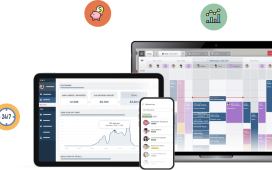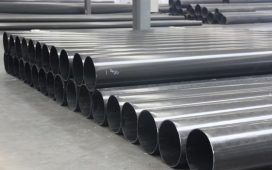“When there is data smoke, there is a business fire” is a popular quote by the president of Data Quality Solutions, Thomas Redman. We can’t help but agree with this, seeing how much value the right data set contributes to the growth of any business. Businesses require data for several reasons – to discover consumer trends and customer preferences, analyze reviews and figure out other market complexities.
Have you ever wondered where all this data is sourced from?
Sources of data for business analytics
Businesses obtain their data from several sources. A good business is the chief source of its data, which is why companies take extra efforts to compile data about their daily activities. From the persona of their customers to the kinds of products and services they purchase the most, to the combinations of orders they make, these are data sets that help companies make important decisions on how to do better and ensure customer satisfaction.
Other kinds of internal data sets on income and expenditures can help a business determine if it is truly making progress, how much profit it has made over the years and what time of the year it makes the most sales. Still, other kinds of data may be used to access employee compliments, determine work trends and identify loopholes in the business’ logistics. Clearly, data is needed everywhere!
Asides from internally sourced data, businesses also rely on already available data sets – that is, relevant data that has been compiled from other sources. A real estate company, for example, may obtain data on how far people are willing to drive to access amenities like supermarkets, theaters and hospitals. This kind of data will inform the real estate company on how to structure their housing, such that they are reasonably close to these amenities.
With companies constantly needing to amass data for their business analysis, they often require a bigger and better space to store, centralize and process these huge pileups of data. Businesses will usually turn to a data center to achieve this.
Data centers are highly specialized facilities, requiring high amounts of energy to run, special temperature conditions and top security. Hence, only a few classified companies have been able to own private data centers. However, there are several types of data centers, such as cloud and colocation data centers, that operate for public use and serve businesses across dozens of countries.
The world’s largest data centers
- China Telecom Data Center: Founded in 2002 with its main headquarters in Beijing, China Telecom Data Center is the largest data center in the world, occupying 10,763,910 square feet with an extensive network of 456 data centers. The data center is owned by China Telecom, a Chinese state-owned telecommunication company. Although it serves up to 10 countries, China Telecom’s 456 data centers majorly serve mainland China. The data centers are mostly used for telecommunication and cloud computing and have been patronized by several giant companies including Alibaba and Baidu.
- Equinix: Equinix features over 200 data centers serving 24 countries including the UK and the US. Headquartered in California, Equinix offers services including cloud data protection through the Smarkety cryptography service, a marketplace for finding solutions to IT problems and data integration applications.
- Telehouse/KDDI: Telehouse/KDDI features a powerful amalgamation of two companies that were founded at different times in different countries. KDDI was founded as far back as 1953 in Tokyo, Japan, while Telehouse was founded in 1988 with its headquarters in London, UK. The company’s 40 data centers serve 12 countries and offer services such as data storage, processing and security; managed services like systems monitoring and hardware upgrades; connectivity services; and data collocation services.
- Lakeside Technology Data Center: One of the 280 data center sites owned by Digital Reality, Lakeside Technology Center is also one of the largest data centers in the world. Occupying 1,100,000 square feet in Chicago, Lakeside Technology’s data centers are used mostly by financial firms. The center features a unique 8.5-million-gallon tank cooling system with three powerful electric power feeds that provide the building with more than 100 megawatts of power.
Too much data: How do I make sense of it all?
These days, getting the right data sets has never been much of a headache. This was not the case a couple of years ago when data was scarce and highly classified.
However, the availability of generous data means that there must be specialists who are able to analyze all of this material to deduce any relevant information. Raw data is not of much use until it is analyzed to identify trends, outliers and other novel discoveries. The process of analyzing available data for business use is referred to as business analytics.
There has been a recent surge in demand for business analytics professionals, which is not at all surprising. Data collection is the new way in the business world. It has and will continue to fuel technological advancements such as artificial intelligence and machine learning. Not to mention, it also does the basic duty of helping businesses identify trends in order to take the right actions.
Aston University’s online business analytics degree is a great starting point for anyone who wants to capitalize on the high demand for analytics professionals in the business world. Even if you have little or no background in data science or analytics, this degree will get you on track and help you understand how data works and how it can be analyzed to extract meaningful information that will aid business growth.
Conclusion
Data centers are the world’s resource facilities for storing, managing, backing up and recovering data. They have recently evolved into centers for instructing technology using big data to design artificial intelligence and machine learning. While smaller business entities utilize public cloud-based services for storing data, bigger companies either use public data centers or create their own private data centers.







